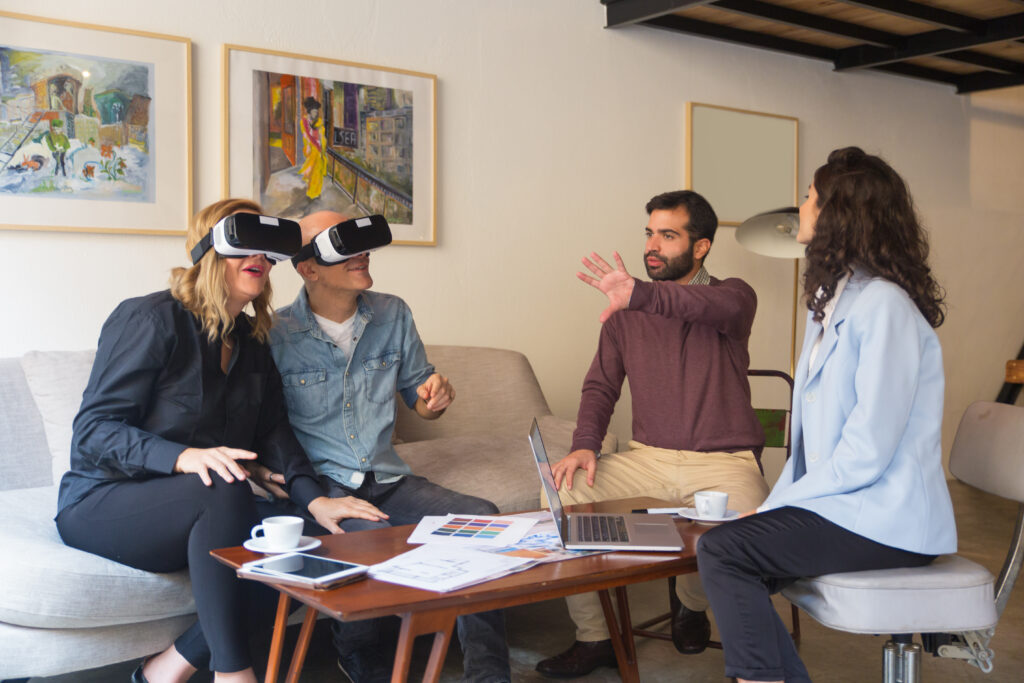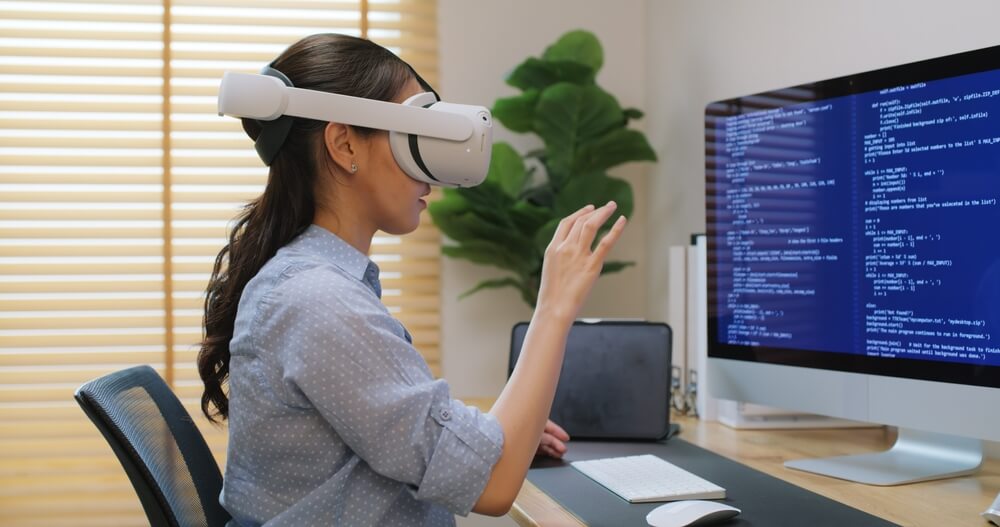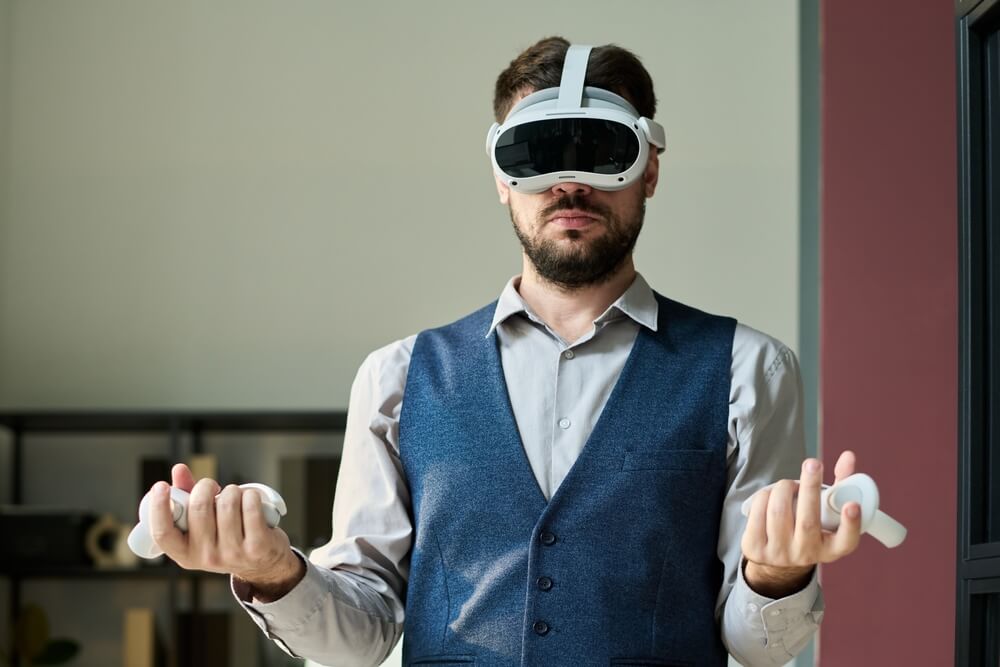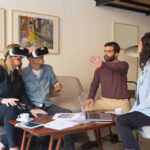Real-Life Dangers of Augmented Reality
Table of Contents:
Augmented reality continues to conquer more and more sectors of the business world, and, although it is developing very quickly while also offering many new opportunities for growth, it is essential to be aware of the risks of augmented reality that this technology brings. Privacy, data protection, health, and meaningful engagement are just a few examples of the potentially difficult areas that we will discuss later in this article. Read on to find out more!
Development perspectives of Augmented Reality
In the next few years, dramatic changes in market conditions such as business models and consumer preferences are sure to occur. As part of this, augmented reality (AR) is a technology that will powerfully shape our world in the coming decades. According to a report by MarketsandMarkets, the augmented reality market was valued at $14.7 billion in 2020 and is expected to reach $88.4 billion by 2026. The most significant demand for AR technologies currently comes from the creative economy industries, in particular gaming, live events, video entertainment, and retail. But the opportunities don’t end there – AR is also increasingly finding applications in healthcare, education, the military, and real estate.
Applications of Augmented Reality
The rapid development of AR technology, as well as its growing number of applications and their widespread availability, means that almost anyone can use it. However, the purpose and method of use will depend on each user’s individual preferences and views. For some, AR technology will be a tool for technological support, for example in professional work or education. For others, it might be a source of entertainment and a way to spend leisure time, or even a means to achieve financial success.
Wise and conscious use of augmented reality should bring measurable benefits, which will be seen in increased effectiveness at work, in education, and in well-being, and in tangible increases in income. Inappropriate “social” use of AR technology, on the other hand, may raise moral and ethical concerns and, in extreme cases, may even exceed the established legal standards and rules of social coexistence. It is also worth noting that the overuse of AR technology can have a negative impact on human health, both mental and physical, with side effects and cons of augmented reality including eye issues, ear problems, and states of mental dependence.
Unlock the future with Mazer: Your innovation partner.
What real-life dangers and risks does augmented reality pose?
While widespread digitization and adaptation of new technologies can bring a lot of benefits to humanity and the development of economies, it is also essential to be aware of the risks. The key negative effects and impacts of AR are:
Privacy and data protection
AR requires constant data capture to overlay information on real-world scenes, leading to substantial data collection from users. This data can include personal information, geolocation, and details about a user’s environment, all of which contribute to serious privacy risks. For instance, malicious actors could gain access to AR applications to collect sensitive data, infringing on users’ privacy without their knowledge. Understanding app permissions and data handling policies is essential to protecting privacy when engaging with AR.
Hacker attacks and security
Despite its revolutionary capabilities, AR technology is not immune to cybersecurity risks. AR’s integration with navigation systems and other real-world applications can present significant dangers if compromised. A hacked AR app could manipulate information, potentially leading users to unsafe locations or redirecting navigation for malicious purposes. Cybersecurity measures, such as verifying data sources and exercising caution with app permissions, are essential to mitigate these threats and ensure user safety.
Addictions
It is becoming easier and easier for people to experience virtual reality. Because of this, the amount of time people dedicate to this technology is growing significantly. Younger generations in particular may find it difficult to resist the lure of VR and choose other activities. It is essential to remember that young people need time to experience the world as it is, not as it might be represented on a screen, and they might not get this if VR takes over their lives. To avoid the risk of AR addiction, it is crucial to monitor the use of this technology.
Physical health impacts of prolonged use
Beyond mental health, AR can have physical repercussions, particularly with prolonged exposure. Issues such as eye strain, headaches, and dizziness are common side effects for frequent AR users, caused by the intense focus required for virtual interactions. Additionally, some AR applications, especially those in high-motion settings like gaming, may result in inner ear issues that lead to dizziness and balance problems. Setting limits on screen time and taking regular breaks can reduce these physical impacts, helping users enjoy AR responsibly.
Ethical and social concerns
AR brings up unique ethical considerations, as it has the power to alter users’ perceptions of reality. For instance, AR can simulate emotional experiences, which may affect how individuals perceive relationships and real-world interactions. When used in marketing, AR could even be employed to influence consumer behavior subtly. It’s essential to recognize these potential manipulations and understand the ethical responsibilities of AR developers and users.
Negative effects of augmented reality on the environment
The negative impacts of augmented reality extend beyond individual user experiences and privacy concerns, encompassing significant environmental issues. As AR technology continues to evolve, the production and disposal of AR devices contribute to electronic waste, which poses serious ecological challenges. Improper disposal of these devices can lead to soil and water contamination due to hazardous materials found in components like batteries and screens. The growing demand for AR devices necessitates a critical examination of their life cycle, from resource extraction to end-of-life disposal, to mitigate their environmental footprint.
Electronic waste generation
The generation of electronic waste (e-waste) is a pressing concern associated with augmented reality technology. As AR devices become obsolete or are replaced with newer models, they often end up in landfills where they can leach toxic substances into the environment. The cons of augmented reality materialize in the complexity of recycling these devices complicates the recovery of valuable materials and increases the likelihood of improper disposal. To address this issue, manufacturers must implement effective recycling programs that encourage consumers to return old devices and ensure that hazardous materials are handled safely.
Carbon footprint considerations
The carbon footprint associated with augmented reality applications is another critical aspect that warrants attention. The energy consumption required to power AR devices and the servers that support them contributes significantly to greenhouse gas emissions. Transitioning to renewable energy sources for powering these technologies can play a vital role in reducing their overall environmental impact. By adopting sustainable practices, such as utilizing solar or wind energy, the AR industry can decrease its reliance on fossil fuels and lessen its carbon emissions.
Minimizing the disadvantages of augmented reality – use AR responsibly
As AR technology continues to expand into everyday life, it’s essential to approach it with a mindset of caution and responsibility. Recognizing the disadvantages of augmented reality, including its potential for increased e-waste and carbon emissions, is essential for developing sustainable practices within the industry. Individual users should also take the following steps to safeguard their privacy, security, and health:
- Limit Usage: Monitor screen time to prevent digital dependency and reduce the physical effects of prolonged AR use.
- Verify App Sources: Only download AR apps from reputable developers and regularly check permissions to control data access.
- Stay Informed: As AR evolves, staying informed about the best practices of AR and VR cybersecurity along with privacy concerns can help users adapt safely.
Although the prospect of using AR in various industries usually evokes positive emotions, we must also be aware of the real risks associated with augmented reality. This technology, like any other, may be risky and error-prone, even for people who use new gadgets responsibly. Therefore, when experimenting with augmented reality, it is necessary to monitor its use at all times and to react to any negative signals immediately, before they become problematic.
What is the projected value of the augmented reality market in 2026?
The augmented reality market is expected to reach $88.4 billion by 2026 according to a report by MarketsandMarkets.
What are some real-life dangers posed by augmented reality technology?
Privacy and data protection, hacker attacks and security, and addictions are some real-life dangers posed by augmented reality technology.
What should users do to avoid the negative effects of augmented reality technology?
To avoid the negative effects of augmented reality technology, users should monitor their use of the technology, react to any negative signals immediately, and apply the principle of limited trust by verifying presented data themselves.
Unlock the future with Mazer: Your innovation partner.

Author: Rafał Siejca
Rafal has over twenty years of corporate experience, including roles at Millennium Bank, Comarch, and leading software teams at PZU, one of Europe’s largest insurance companies. As one of Poland’s few true VR experts with a decade of experience, he ensures timely, high-quality project delivery as CEO and CTO.










